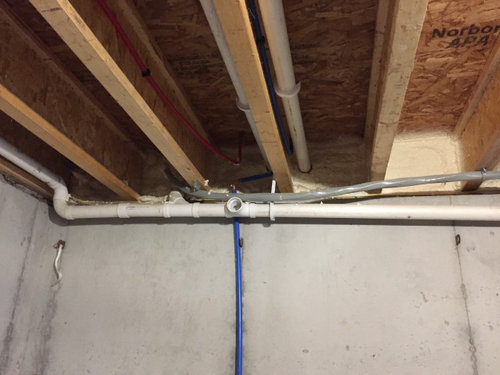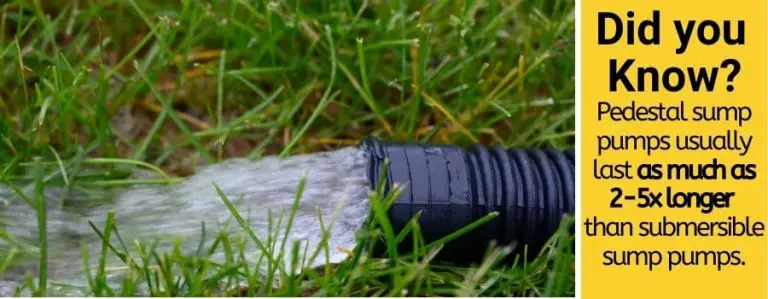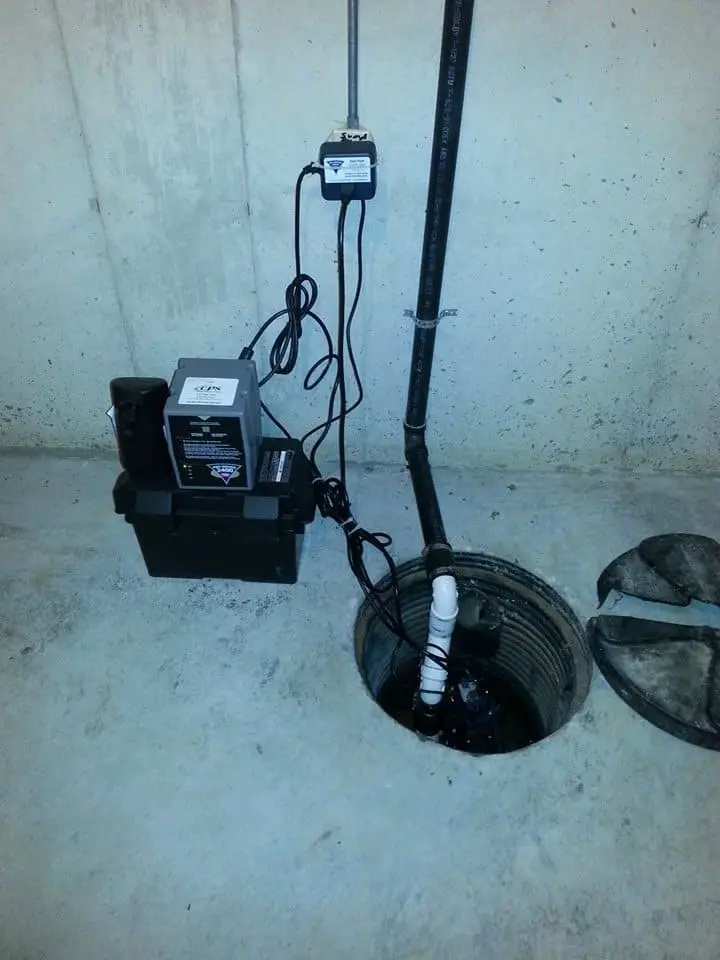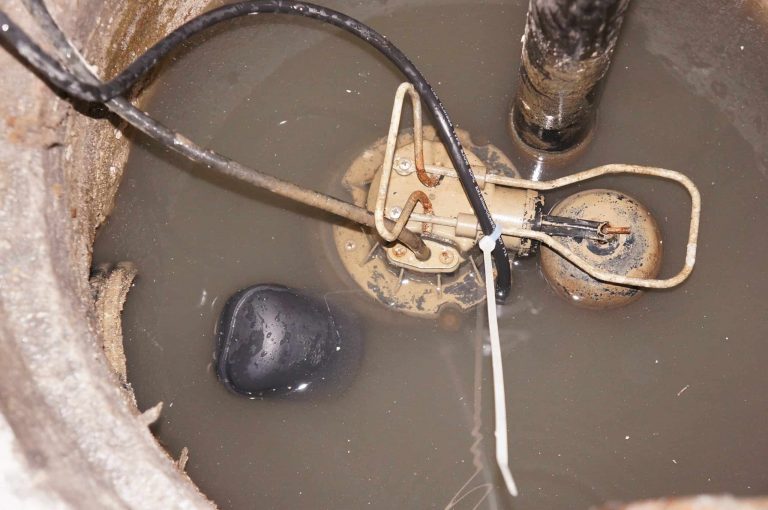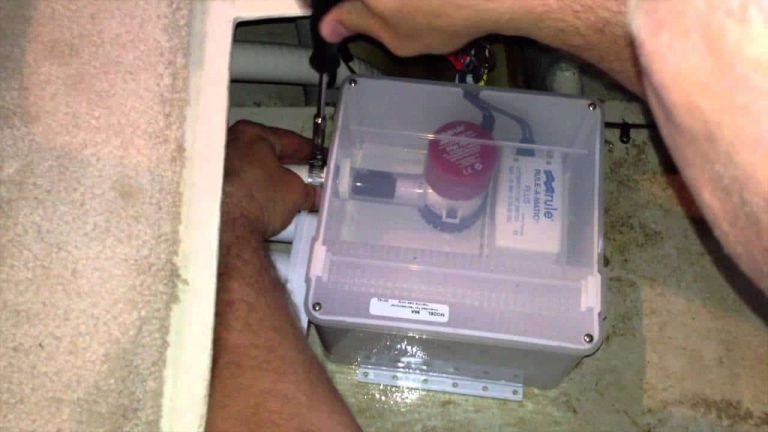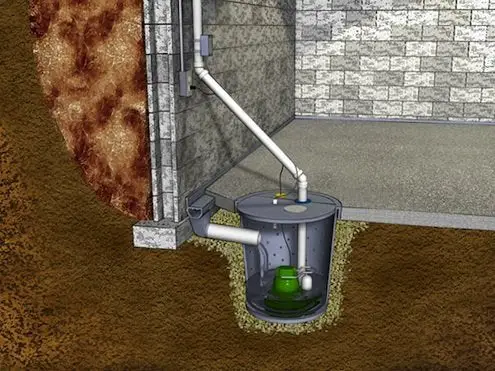How a Pedestal Sump Pump Works
A pedestal sump pump is a type of mechanical device that is used to remove water that has accumulated in a sump pit. The pump is typically powered by electricity and consists of a motor, an impeller, and a housing.
The motor powers the impeller, which spins and draws water up through the housing and into the discharge pipe. The water is then pumped away from the home or business where it can do no damage.
A pedestal sump pump is a type of pump that is used to remove water from an area that has been flooded. This type of pump is often used in basements or other areas where there is a risk of flooding.
The pedestal sump pump is designed to sit on a raised platform, which helps to keep the pump away from the water that it is trying to remove. The pedestal sump pump works by using a float switch to turn on and off.
When the water level rises, the float switch turns on the pump. The pedestal sump pump then pumps the water out of the area and into a drain or sewer system.
Everything You Need To Know About Sump Pumps
How to Install a Pedestal Sump Pump
Installing a pedestal sump pump is a relatively easy do-it-yourself project. The first step is to find the location for the pump.
It is best to place the pump in an area that will allow easy access for maintenance and where the discharge hose will not be obstructed. Once you have found the perfect location, mark the center of the hole that will need to be drilled for the discharge pipe.
Next, using a drill fitted with a 1/2” spade bit, drill your hole at the marked location. If you hit any rocks while drilling, simply move over slightly and try again until you have a clean hole.
Now it’s time to install the check valve onto the discharge pipe. You will want to hand-tighten this connection before moving on.
Now it’s time to connect your sump pump to a power source. Using marine grade wire (or another type of durable outdoor wire), connect one end of your wire to either side of the switch on your sump pump (consult your owner’s manual if you are unsure which wires to use).
Then, run your wire through PVC conduit or bury it directly into the ground until you reach an outlet or GFCI protected circuit breaker that can provide power to your sump pump. Make sure all connections are secure and waterproof before continuing.
The final step is to fill around Pedestal Sump Pumpthe base of your pedestal sump pump with gravel or stones so that water can drain properly and not damage your foundation or basement walls by pooling too close by. Add some water into the pit and watch as your new sump pump kicks on and starts doing its job!
Installing a Pedestal Sump Pump – Youtube
A pedestal sump pump is a great way to protect your home from flooding. If you live in an area that is prone to flooding, or if you have a basement that is susceptible to water damage, a sump pump can be a lifesaver.
Installing a pedestal sump pump is not as difficult as it may seem, and it can be done in a few simple steps. The first step is to find the perfect location for your pedestal sump pump.
You want to make sure that the location you choose will allow the pump to properly drain water away from your home. Once you have found the perfect location, the next step is to install the base of the pedestal sump pump.
This can be done by either bolting it down or using concrete adhesive. After the base of the pedestal sump pump has been installed, it’s time to install the actual pump itself.
The most important part of this process is making sure that the intake and discharge hoses are properly connected. Once everything is hooked up, all you need to do is plug in the Pedestal Sump Pump and turn it on!
How to Replace a Pedestal Sump Pump
A sump pump is a vital part of any home’s flood prevention system. If your home is in an area that is prone to flooding, or if you simply want to be prepared for the worst, a sump pump can help to protect your property.
While most sump pumps are built to last, eventually they will need to be replaced. Here is a step-by-step guide on how to replace a pedestal sump pump.
1. Start by unplugging the old sump pump from the outlet.
Then, use a wrench or pliers to loosen the clamp that secures the discharge pipe to the pump. Once the clamp is loosened, you can remove the discharge pipe from the pump.
2. Next, use a screwdriver or drill to remove the screws that hold the base of the old sump pump in place.
Once those screws are removed, you should be able to lift the old sump pump out of its base. 3.
Inspect the hole where your old sump pump was located. If there is any debris or build-up around it, use a brush or vacuum cleaner attachment to clean it out before proceeding.
4 Take your new sump pump and place it into the base so that its electrical cord has enough slack to reach an outlet. Securely screw it into place using either wood screws (if provided) or masonry anchors and screws.
Be sure not over-tighten as this may damage threaded parts within the unit. Reconnecting The Discharge Pipe: 5 .
Pedestal Sump Pump Vs Submersible
If you are in the market for a new sump pump, you may be wondering whether to choose a pedestal or submersible model. Both have their pros and cons, so it’s important to understand the difference before making a decision.
A pedestal sump pump is less expensive than a submersible model and is easier to install. However, it is also more likely to fail because it is not as well-protected from the elements. A submersible sump pump is more expensive but will last longer because it is completely submerged in water and therefore not as susceptible to damage from the elements.
Pump Pedestal Mount
A pump pedestal mount is a great way to keep your pumps organized and tidy. By mounting your pumps on a pedestal, you can free up valuable floor space and keep your equipment within easy reach.
Pedestal mounts are available in a variety of sizes and styles to suit your specific needs. When choosing a pump pedestal mount, be sure to consider the weight of the pumps you need to support.
Some mounts are designed for lighter duty pumps, while others can accommodate heavier duty models. Also, take into account the height of the pedestal and the distance between each pump when making your selection.
This will ensure that your pumps are properly spaced and supported. Once you have selected the perfect pump pedestal mount for your needs, be sure to follow all manufacturer’s instructions for installation and use. With proper care and maintenance, your new mount will provide years of trouble-free service.
Sump Pump Installation Process
Are you considering installing a sump pump in your home? This is a great idea if you live in an area that is prone to flooding or if your basement is susceptible to leaks. Installing a sump pump can help protect your home from water damage and mold growth.
The first step in installing a sump pump is to find the perfect location for it. You want to install the pump in an area of your basement that is lower than the rest of the floor so that water will flow towards it.
Once you have found the perfect location, you will need to drill a hole through the floor and into the pit where the pump will be installed. Next, you will need to attach a discharge pipe to the sump pump.
The discharge pipe will carry water away from your home once it has been pumped out of the pit. It is important to make sure that the discharge pipe is installed properly so that water does not leak back into your home.
Once the discharge pipe is installed, you can now connect the power cord to the sump pump and plug it into an outlet. Be sure to test out your new sump pump before leaving it turned on for extended periods of time, just in case there are any issues with it.
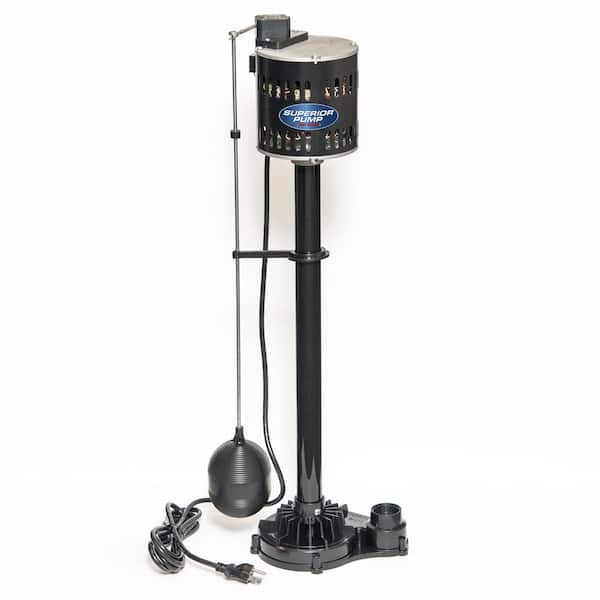
Credit: www.homedepot.com
Is a Pedestal Sump Pump Better?
If you’re in the market for a sump pump, you may be wondering if a pedestal sump pump is the way to go. Here’s a look at the pros and cons of pedestal sump pumps to help you make your decision.
Advantages of a Pedestal Sump Pump 1. They’re affordable.
Pedestal sump pumps are one of the most budget-friendly options on the market. 2.
They’re easy to install. Most pedestal sump pumps can be easily installed by anyone with basic do-it-yourself skills.
3. They don’t require as much maintenance as some other types of sump pumps.
Since they’re not submerged in water, there’s no need to worry about them rusting or corroding over time. 4. They tend to be more durable than submersible sump pumps since they’re not constantly exposed to moisture and humidity.
Can a Pedestal Sump Pump Get Wet?
If you have a pedestal sump pump, you may be wondering if it is okay for the pump to get wet. The answer is yes, a pedestal sump pump can get wet without damage.
However, if the pedestal sump pump gets too wet, it may not work as efficiently or effectively. A sump pump is designed to remove water that has accumulated in a sump pit.
The water is typically pumped out of the pit and away from the home or business to prevent flooding. A pedestal sump pump has a long shaft with a float at the end of it.
The float triggers the pump when it rises to a certain level, signaling that there is water present that needs to be removed. A common question about pedestal sump pumps is whether or not they can get wet.
Since these pumps are meant to remove water, it stands to reason that they can get wet without being damaged. In fact, most manufacturers design their products so that they can withstand getting wet on occasion.
However, if your pedestal sump pump gets too wet, it could start to rust and corrode over time. This will eventually lead to the need for repairs or replacement parts.
To avoid this problem, make sure that your pedestal sump pump is only exposed to small amounts of water at a time. If you live in an area with heavy rains or flooding, you may want to consider investing in a backup system just in case your primary system fails due to excessive moisture exposure.
Does a Pedestal Sump Pump Need a Weep Hole?
A sump pump is a device that is used to remove water that has accumulated in a sump pit. The water is typically removed by means of a centrifugal pump.
A pedestal sump pump is one that sits on top of the floor, rather than being submerged in the pit. Weep holes are not necessary for a pedestal sump pump, as there is no need to vent air from the pit.
How Long Does a Pedestal Sump Pump Last?
As with any mechanical device, the lifespan of a pedestal sump pump will vary depending on a number of factors, including quality of manufacture, frequency and intensity of use, and proper maintenance. With that said, a typical pedestal sump pump can be expected to last anywhere from 3 to 5 years before needing to be replaced.
Of course, as with anything else, there are always exceptions to the rule. In some cases, poor manufacturing or lack of maintenance can lead to a much shorter lifespan for a pedestal sump pump – sometimes as little as 1 or 2 years.
Conversely, pumps that are well-made and properly maintained can last up to 7 years or more. So what can you do to help extend the life of your pedestal sump pump? First and foremost, make sure you choose a quality product from a reputable manufacturer.
Secondly, be sure to follow the recommended maintenance schedule for your particular model (this will usually involve periodically checking and cleaning the impeller). And finally, don’t forget to keep an eye on things in general – if you notice any unusual noises or leaks coming from your pump, it’s best to have it checked out by a professional sooner rather than later.
Conclusion
A sump pump is a device that is used to remove water that has accumulated in a water-collecting sump basin. The water is typically pumped out of the basement and away from the home.
Sump pumps are usually installed in areas where flooding is common, such as in basements and crawlspaces. Sump pumps come in two different types: pedestal and submersible.
Pedestal sump pumps have a motor that sits above the floor, while submersible sump pumps have a motor that sits below the floor. Both types of sump pumps are effective at removing water from the basement, but pedestal sump pumps tend to be less expensive and easier to install than submersible sump pumps.
Pedestal sump pumps are also less likely to fail than submersible sump pumps because they are not susceptible to flooding or other damage that can occur when the basement floods. If your basement does flood, you can simply unplug the pedestal sump pump and move it to a higher location until the floodwaters recede.

